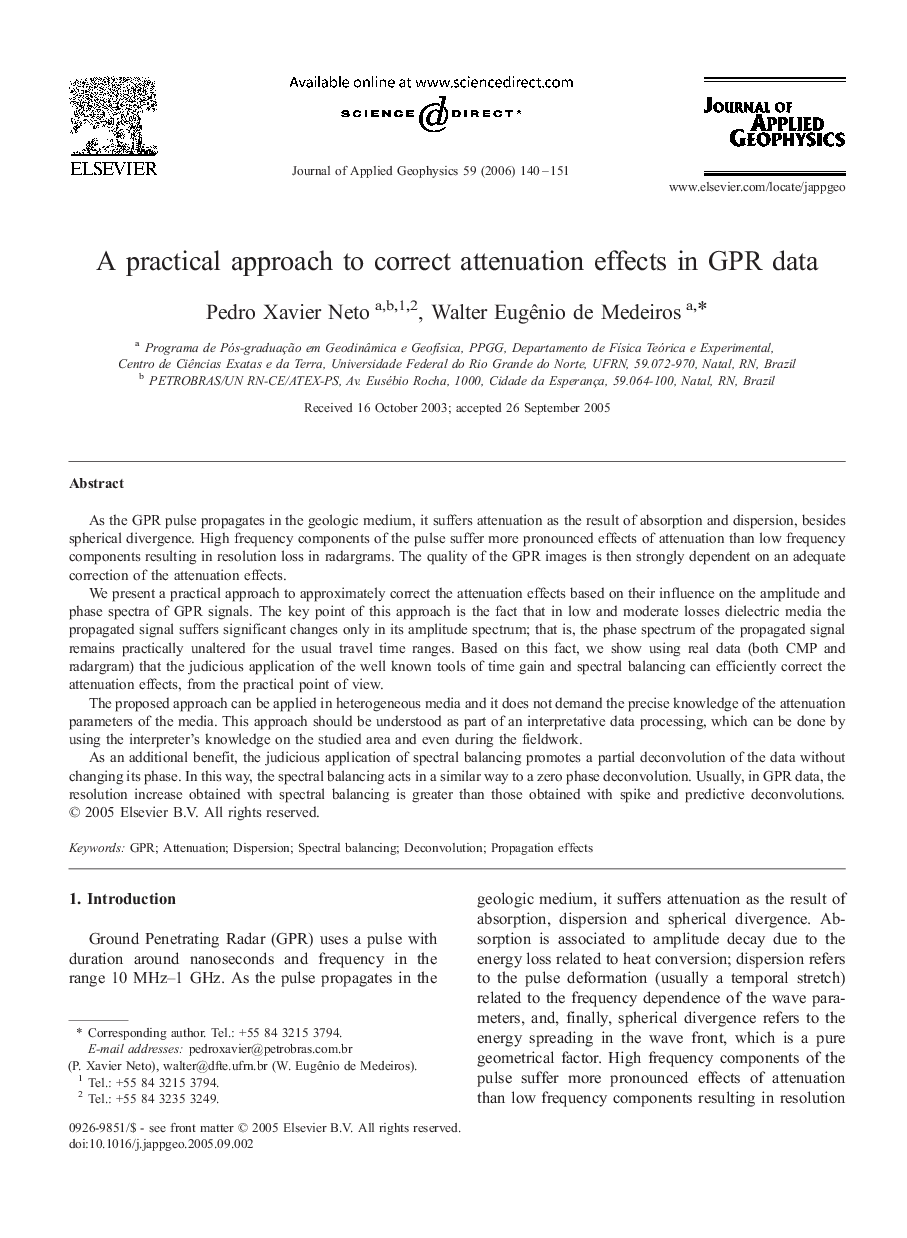| Article ID | Journal | Published Year | Pages | File Type |
|---|---|---|---|---|
| 4741228 | Journal of Applied Geophysics | 2006 | 12 Pages |
As the GPR pulse propagates in the geologic medium, it suffers attenuation as the result of absorption and dispersion, besides spherical divergence. High frequency components of the pulse suffer more pronounced effects of attenuation than low frequency components resulting in resolution loss in radargrams. The quality of the GPR images is then strongly dependent on an adequate correction of the attenuation effects.We present a practical approach to approximately correct the attenuation effects based on their influence on the amplitude and phase spectra of GPR signals. The key point of this approach is the fact that in low and moderate losses dielectric media the propagated signal suffers significant changes only in its amplitude spectrum; that is, the phase spectrum of the propagated signal remains practically unaltered for the usual travel time ranges. Based on this fact, we show using real data (both CMP and radargram) that the judicious application of the well known tools of time gain and spectral balancing can efficiently correct the attenuation effects, from the practical point of view.The proposed approach can be applied in heterogeneous media and it does not demand the precise knowledge of the attenuation parameters of the media. This approach should be understood as part of an interpretative data processing, which can be done by using the interpreter's knowledge on the studied area and even during the fieldwork.As an additional benefit, the judicious application of spectral balancing promotes a partial deconvolution of the data without changing its phase. In this way, the spectral balancing acts in a similar way to a zero phase deconvolution. Usually, in GPR data, the resolution increase obtained with spectral balancing is greater than those obtained with spike and predictive deconvolutions.
